Expiration Dates: Tschisi Eis

Introducing a fresh, new series on old, dead foods.
by Sahar Tavakoli.
Expiration Dates is a collaboration between The Stopgap’s obituary column and RELISH— a multidisciplinary research project aimed at Reframing European Gastronomy Legacy through Innovation, Sustainability, and Heritage.
Under the European Union’s Horizon Europe Research and Innovation Programme, RELISH explores the role of recipes, rituals, and culinary practices in the formation of European cultural identity. Gastronomy is never static. We adapt recipes according to skill level, party size, and wherewithal; we substitute ingredients in keeping with changes to availability, affordability, and desirability. Our tastes entangle with histories of trade, migration, and fashion. The “Reframing” part of RELISH, then, lies in understanding heritage not as a fixed inheritance but as a living, transformative practice.
This short-run series offers four culinary obituaries, together intended to reflect on the lives and afterlives of foods that have been celebrated, neglected, or regulated out of existence. Can a food or dish be simultaneously shameful and celebratory? Can it be brought back from the dead? Who or what gets to act as spokesperson for our food? Who, moreover, is qualified to judge its value? What follows here are reflections on the work food does—before, during, and after its disappearance.
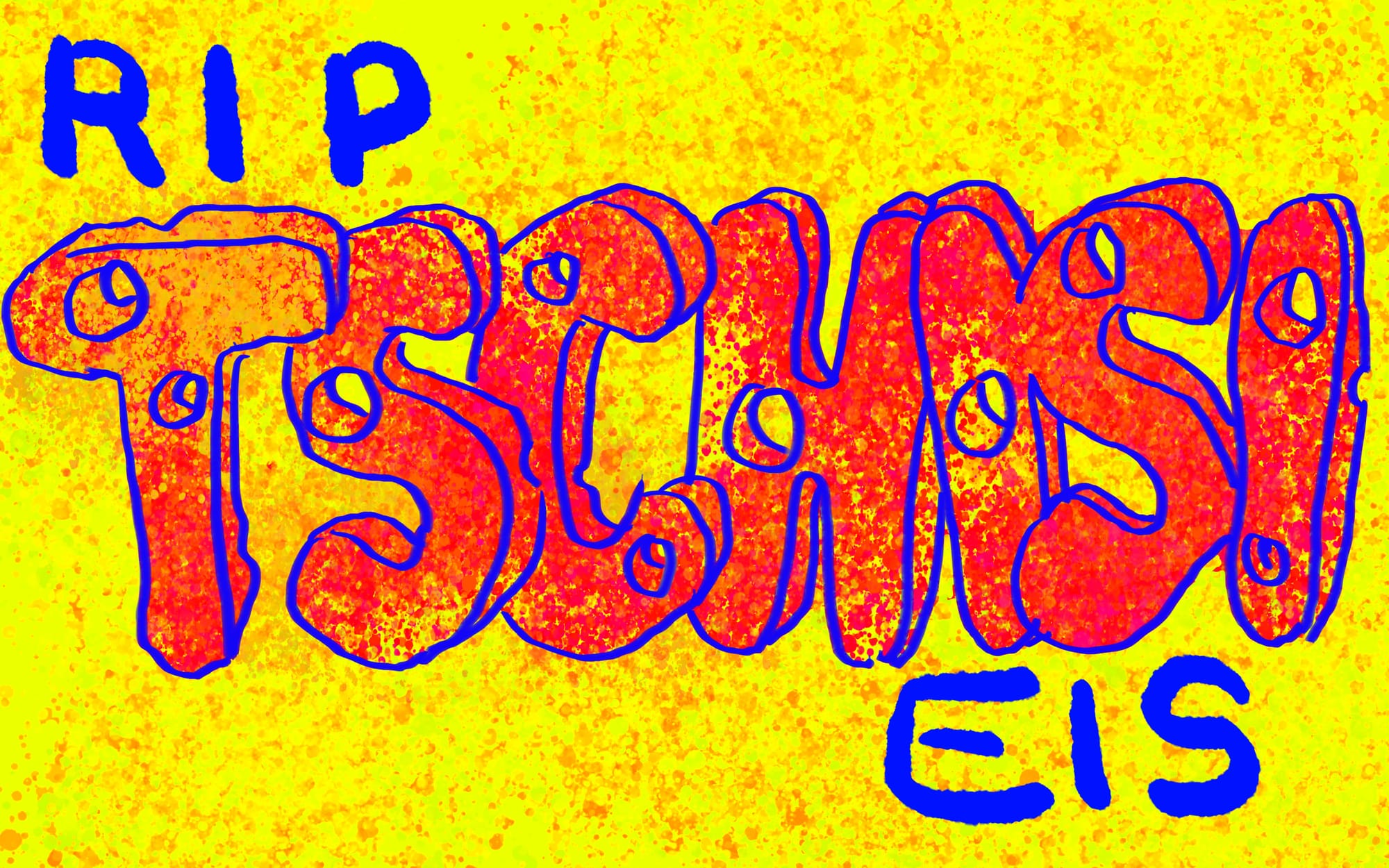
Expiration Dates #1: Tschisi Eis Ruhe in Frieden
Death of a cheese popsicle.
Es ist hart zu leben, aber härter ist es noch zu sterben: Tschisi Eis has been discontinued. Introduced to the Austrian market some time between April and June of 1990, the ice-cream-on-a-stick was phased out of production between August and October of 2013.
Named in a phonetic transliteration of the English adjective cheesy, buttery yellow in colour, and patterned with the holes (1) of an Emmental or Maasdam, Tschisi was vanilla flavoured. The misdirection did not deter potential consumers. It received its official trademark in 1989 after its developer—Unilever Heartbrand—pitched it as a product designed for the children’s market (2). Following release, it found itself popular with a much wider audience. Human consumers seemed not to mind its caseous naming and appearance.
Murine consumers, for their part, appear to have been equally unbothered by the European popsicle’s Euro step. Like Žižek devouring hotdogs, Tschisi’s mouse mascot held one ice cream in each hand, expressing its contentment with this bounty by way of a speech bubble reading “MHMMMM VANILLE!” As the years passed, however, its unfussy flavour came to be taken for granted. Consumers had moved on to more exotic fare, like the double-sticked pear, orange, and chocolate Twinni and the marbled mango Solero [a godlike lolly—ed.]. When Unilever Heartbrand first discontinued Tschisi in 1999, its departure passed without comment.
The possibility of return is, of course, canonical. Three days after His death, Christ was resurrected. On receiving news of the miraculous event, Thomas the Apostle expressed some doubt, stipulating the evidence he would need prior to any reconsideration of his position. “Except I shall see on His hands the print of the nails,” records the Gospel of John, “and put my finger into the print of the nails and thrust my hand into His side, I will not believe.”
That resurrection is possible does not make it common. Even less likely is being resurrected with one’s wounds intact. Among hermeneutical scholars, the wounds Christ later presents to Thomas are themselves a kind of testimony—signs of continuity between the crucified and resurrected figure, and an affirmation that resurrection does not erase, but transforms suffering. As in Isaiah 53:5: “by His wounds we are healed”—the multi-wounded Tschisi included.
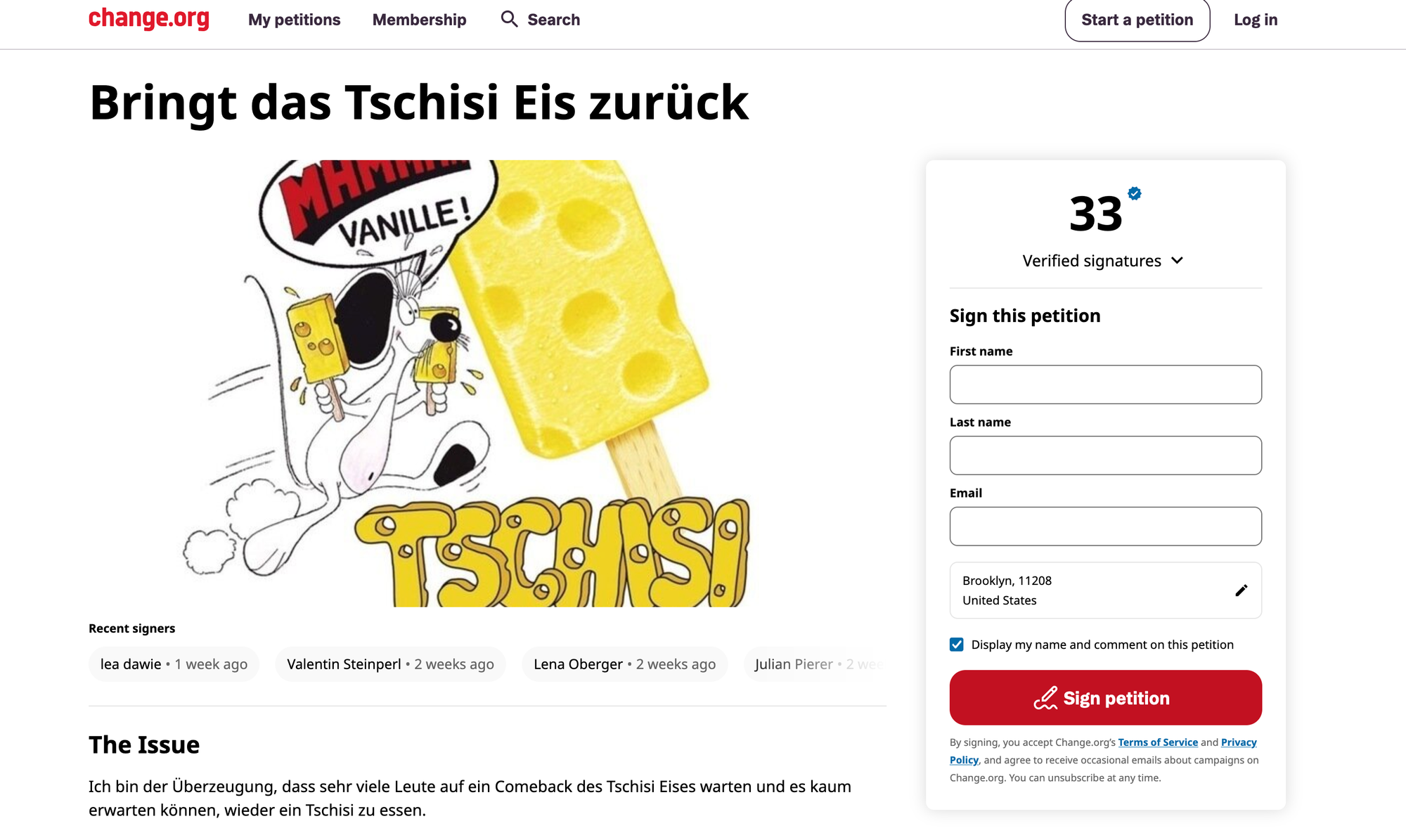
In October 2012, a Tschisi faithful from the city of Wels, Peter Brandlmayr, began a petition for Tschisi’s return. By December, the petition had 88,000 signatures and the support of media outlets such as radio station Welle 1, television network Puls 4, and weekly print magazine News. In February 2013, Tschisi was resurrected, its body no longer pockmarked, but whole.
In the years between its first death and second coming, national standards pertaining to production management and quality assurance had grown more stringent. The pressure forming machinery used to mold the punctured body of Tschisi also rendered its birchwood stick more brittle and thus likely to splinter. Having called for the ice cream’s return, many now adopted the manner of Thomas: without foraminous proof, they simply could not accept that Tschisi was Tschisi. Unrecognised, the rerun was short-lived. By summer’s end, Tshisi was, once again, no more. To date, there has been no sign of a third return.
Tschisi is survived by Bubble O’Bill, an Australia–New Zealand Unilever Heartbrand offering who, having narrowly escaped a bullet to the head, wears a hat marked by the attempt, and by cola-flavoured Calippo—my favourite.
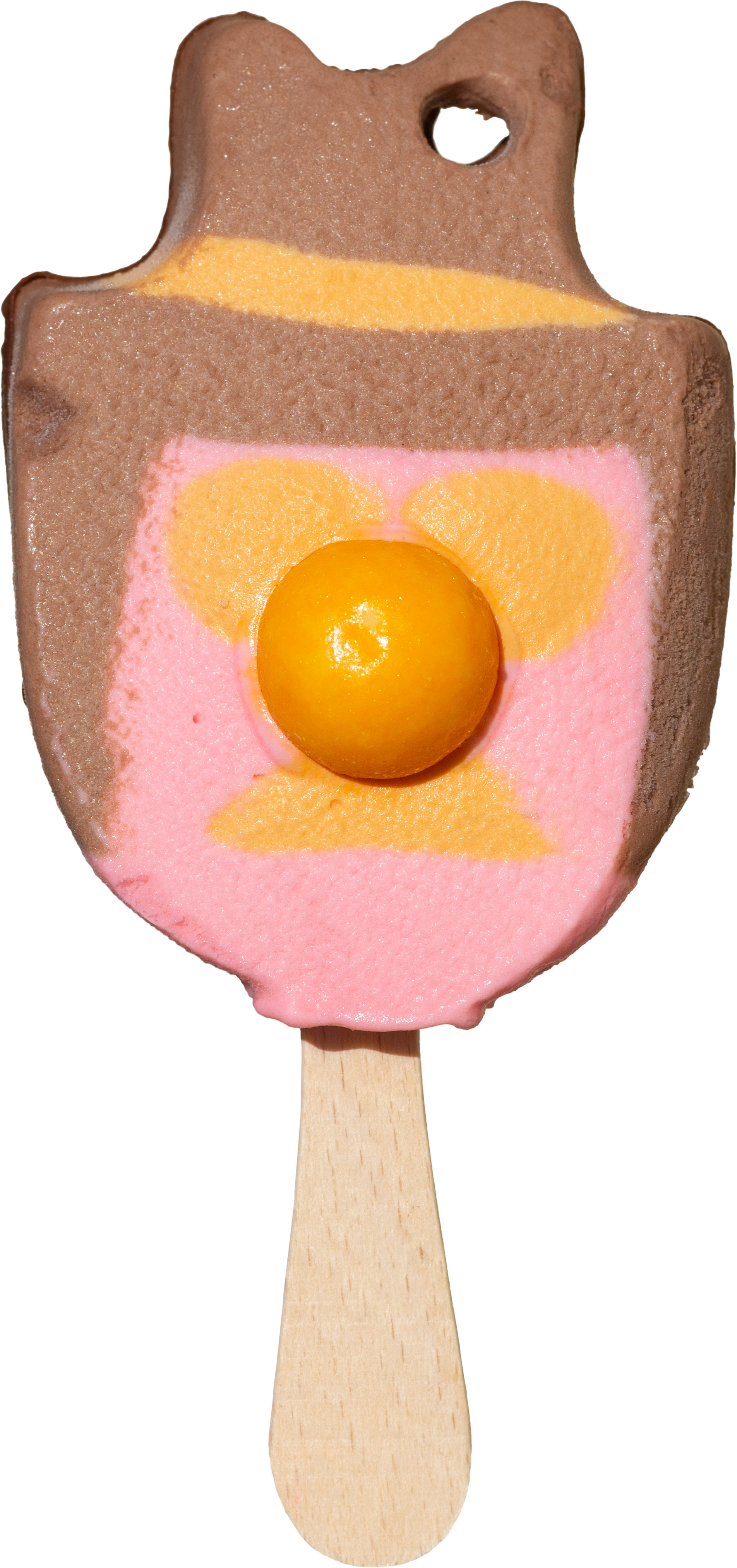
(1) Technically, these are "eyes."
(2) The strawberry, vanilla, and chocolate foot-shaped Plattfuß ice cream obviously being an adult-only ice cream.

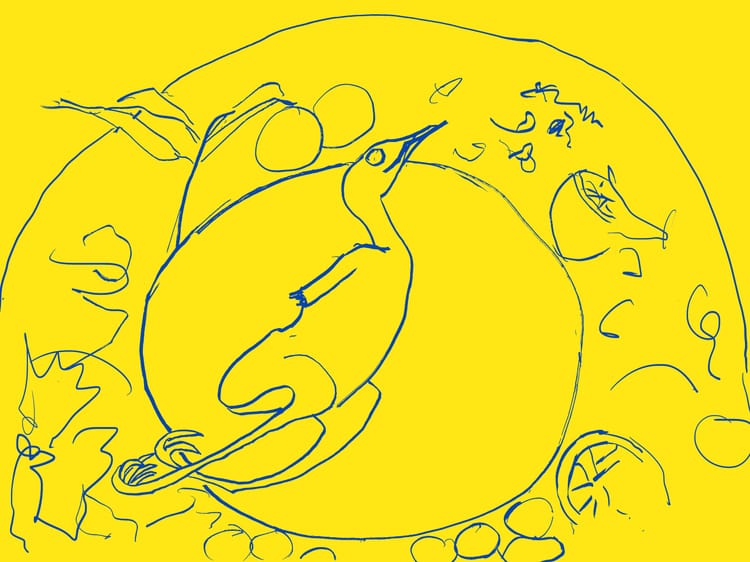

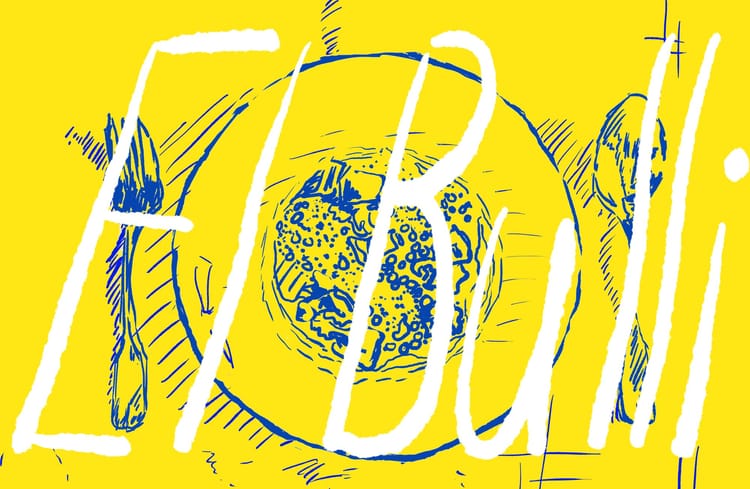
Comments ()